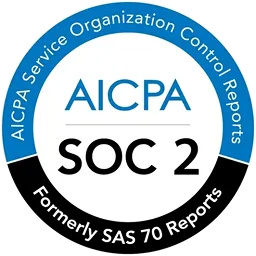OKR and KPI are indicators/metrics commonly used within an organization to track outcomes. Although they serve a similar purpose, they perform differently. In this article, we'll thoroughly compare these two (i.e., OKR vs KPI) so that you understand how they differ.
How are you supposed to find out whether you can achieve the organization's set goal or make any progress? With tools like OKR and KPI, you can easily evaluate the progress and make necessary adjustments to attain the desired goal quickly.
But the catch here is while these two goal-setting systems may look alike, each has its own strengths and caters to unique needs.
How are they different? Which one is better? To provide you with the answers, we've differentiated OKRs vs KPIs in detail. This comparative analysis will help you determine which is the better option for your organization.
So, let's start by understanding what is an OKR vs a KPI.
What Is OKR?
Objective and key result, commonly referred to as OKR, is a metric or measurement tool used to define a company or team's goals. It further helps break down these goals into clear objectives (which are the desired outcomes) and key results (which are specific and measurable milestones), making it easier to track progress towards achieving those objectives.
OKRs also set ambitious targets and outline the specific steps needed to reach them. They are commonly used to set quarterly goals but can also be applied to annual planning.
Note: The popularity of OKRs has increased, especially because companies like Intel and Google have implemented them in their planning processes.
Let's take an example to clarify the difference between objective and key result.
Example Of An OKR
A company wants to improve the ticket management process, so this is an objective.
Now, how will you come to know whether you have achieved your objective or not?
This is where key results act as an indicator. A good pair of KR to achieve the above objective will be
- Decrease average response time to employee inquiries/app requests from 24 to 12 hours by the end of the quarter. It specifies a clear target (reducing response time) and a measurable metric (24 to 12 hours). Achieving this key result would indicate improved efficiency in handling employee inquiries/app requests.
- Implement a new ticket categorization system to reduce resolution time by 20% within the next six months.It outlines a specific action to be taken (implementing a new ticket categorization system) and a measurable outcome (reducing resolution time by 20%). Meeting this key result would indicate progress in streamlining the request resolution process.
What Is KPI?
Key performance indicators (KPIs) are metrics designed to assess the effectiveness of a specific activity or team. They can be used to measure various aspects such as projects, programs, products, people, and more.
However, you need to understand that the effectiveness of a KPI depends on the actions it triggers. Often, companies adopt KPIs used by others without customizing them, and then they wonder why their goals are not met. Just as each employee is unique, every organization has its own distinct characteristics and goals.
Therefore, this performance metric needs to be customized accordingly. Also, trigger actions that align with specific organizational objectives—outlining how they will be achieved and identifying who will act on the insights derived from them.
Let's take an example of a KPI; this will provide you with a better understanding of KPIs.
Example Of A KPI
An organization wants to increase marketing qualified leads (MQLs) by 30%, so this is a KPI.
To achieve this objective, KPI outlines a plan, which includes:
What: Grow MQLs by 30% this year
Why: This will help the business become profitable
How: Hiring more sales staff, refining marketing tactics, using new tools, generating more content, etc.
Who: The VP of Marketing oversees this metric
When: Progress will be reviewed every quarter
After going through the definition and example, you might have got clarity about OKR vs KPI. However, we've also compared them based on different parameters so that you gain a detailed understanding.
OKR vs. KPI: Comparison Based On Different Criteria
Below, we have differentiated OKR vs KPI based on distinct criteria. These insights will help you understand their clear difference.
1: Type Of Indicator Used
OKR vs KPI uses different types of indicators to measure the outcomes within an organization.
- Key performance indicators use lagging indicators that show the outcomes of a process after it has occurred. For instance, a 12% increase in market share is a lagging indicator and serves as a KPI.
These indicators are useful for looking back and evaluating past performance but are ineffective for controlling outcomes. For instance, tracking employee turnover does not prevent employees from leaving the company. - Meanwhile, Objective and key results use leading indicators that predict or influence goal achievement. For instance, assessing how new development opportunities impact employee satisfaction can help prevent employees from leaving.
Leading indicators use various methods of measurement over a period of time. These methods help to continually assess— whether the business goals are being achieved and whether any adjustments or changes in strategy are necessary to stay on track.
2: Analysis Process
- Although key performance indicators help your team measure performance, they're just standalone metrics that indicate whether a measure is favorable or unfavorable. They don't give the full context or provide direction on what to do next.
- On the other hand, objectives and key results are like KPIs with more depth. The objective tells you what you need to achieve, and the key results show how your team is progressing. So, OKRs give you both the destination and the roadmap to reach it.
Note: KPIs can even be part of your key results because they're measurable.
3: Prioritizes Outcome Or Output Management
- Objectives and key results prioritize managing outcomes, which involves emphasizing the impact or value that objectives bring to stakeholders. Objectives in OKRs are determined based on the desired outcomes or results that are aimed to be achieved rather than focusing solely on the effort put into attaining them.
- Key performance indicators (KPIs) are more oriented towards managing outputs. They are measurable metrics that evaluate your team's performance and productivity. Furthermore, KPIs measure tangible outputs such as revenue, profitability, and operational efficiency, providing a clear picture of your team's performance in these areas.
4: Flexibility
- Objectives and key results are highly flexible as they can be adjusted or refined based on changing priorities, market conditions, or emerging opportunities. Teams can reassess their objectives and key results periodically, making adjustments as needed to stay aligned with evolving business objectives.
- Meanwhile, key performance indicators are often predefined metrics that reflect specific business objectives or performance targets. These metrics are typically set at the beginning of a reporting period and remain the same throughout that period.Therefore, they tend to be less flexible than OKRs. Once established, they are less likely to be adjusted or modified in response to changing circumstances.
5: Time Orientation
- Objectives and key results are typically set and reviewed quarterly, offering short-term objectives and measurable results. The quarterly review process helps assess progress and allows your team to make necessary adjustments to goals based on changing priorities.
- Key performance indicators are often reviewed over a longer duration, which can range from months to years. They provide insights into performance trends and outcomes over these extended periods, allowing you to understand the effectiveness of the strategies implemented and your team's performance during this duration.
OKR vs. KPI: Comparison Table
Here’s a quick summary of KPI vs OKR in tabular format:
Now you might have a question regarding which one to choose for your organization. To help you find an ideal measuring tool, let’s quickly review factors to consider.
Which One To Choose?
Choosing between OKRs and KPIs ultimately comes down to your specific objectives and what you want to measure.
For instance, if your aim is to expand or enhance an existing plan or project, KPIs can be a suitable choice. They provide clear-cut metrics that allow your team to monitor and evaluate project performance in a systematic manner.
On the other hand, if you have bigger goals or want to change your overall direction, OKRs might be the way to go. They're more about setting ambitious targets and figuring out how to achieve them.
Regardless of the approach you select, monitoring progress in a manner that suits your needs is essential.
But can we combine OKR and KPI to avail both of their benefits? Let's find out.
Can OKRs And KPIs Work Together?
If you're struggling to decide between using an OKR or a KPI, consider using both. Combining OKRs and KPIs can be highly effective, as they complement each other well.
KPIs provide a baseline for overall performance, offering valuable data to inform the setting of OKRs. For instance, if your organization aims to keep employee turnover below 15% for the year, but your current turnover rate is 23%, setting OKRs can help you address this gap.
For example, the HR team could set an OKR focused on improving employee engagement:
Objective: Increase employee engagement scores by 20% on the next survey
Key Result 1: Launch a new employee intranet to enhance communication among onsite, remote, and hybrid workers
Key Result 2: Implement career paths to provide clear advancement opportunities for all employees
Key Result 3: Deliver targeted training to managers on topics such as autonomy, well-being, and career development
This OKR directly aligns with the broader KPI of reducing turnover and improving overall performance. By using KPIs to identify areas for improvement and setting OKRs to address them, you can ensure that your goals support each other rather than conflict.
However, you need to choose an effective platform to implement these metrics. While many options are available, one platform that stands out is Zluri. What is Zluri? How does it work? Let's quickly find out.
Effectively Track The Metrics Via Zluri
To effectively track metrics within your organization, it's crucial to have complete visibility and accurate insights into every action taking place. So, to provide you with this visibility and insights, Zluri's SaaS management platform offers a centralized dashboard where you can track active employees, managed apps, average usage, total spend, and more.

But how will these insights help?
Here's how these insights can benefit you:
- Active Employees: You gain visibility into your workforce size by tracking active employees. As per Kuppingercole's research and analysis report, this information enables you to allocate resources efficiently, assign tasks effectively, and identify when additional manpower is needed.
- Managed Apps: Monitoring managed apps helps you understand which applications contribute value to your organization. With this insight, you can invest in or upgrade versions of apps that enhance your team's efficiency and productivity.
- Total Spend: Tracking total spending allows you to monitor your expenses accurately. With this information, you can identify areas where costs can be optimized, make necessary budget adjustments, and ensure financial efficiency.
- Budget Allocated per Team: Understanding the budget allocated to individual teams enables you to make informed decisions about resource allocation and expenditure priorities across different departments or projects.
- Transactions: The ability to track transactions provides visibility into expenditure patterns and ensures transparency in financial transactions. Note: Transactions are categorized into recognized and unrecognized, allowing you to monitor spending and identify any discrepancies.
- Optimization: Zluri's savings optimization model identifies opportunities to eliminate unnecessary expenses, optimize spending, and maximize cost savings across your organization

- Task Tracking: By tracking tasks, you can monitor their progress (like the onboarding and offboarding process) and identify delays. This way, you can find out if the team allotted for the tasks is productive or not.

To know more about Zluri’s SMP capabilities, book a demo now.
FAQs
What is the main focus of OKRs vs. KPIs?
OKRs focus on achieving desired outcomes and driving organizational growth. Meanwhile, KPIs focus on monitoring and measuring performance against predefined targets or benchmarks, providing insights into operational efficiency and effectiveness.
How do OKRs and KPIs differ in terms of measurement?
OKRs involve qualitative objectives and quantitative key results, which are reviewed quarterly to assess progress. On the other hand, KPIs are quantitative metrics that are often tracked annually to monitor performance trends and outcomes.









.svg)














